#Chehrabad
Text
The saltmen are a group of natural mummies that were discovered in the Chehrabad Salt Mine in Iran. This mine is in the Zanjan Province and located about 340 km (211.27 miles) northwest of Tehran. The men are believed to have died in the salt mine and been naturally preserved by the salt. A total of six saltmen have been discovered over the years and they belong to different eras, including the Achaemenid and Sasanian periods.
#salt#Man#mine#Iran#Chehrabad#mummy#Sasanian#Achaemenid#Mining#preservation#ancient#history#ancient origins
42 notes
·
View notes
Text
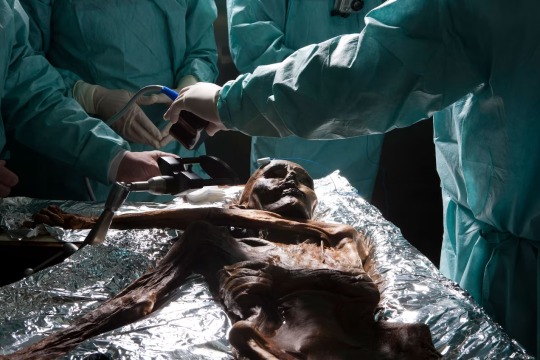
Brain samples are taken from the Copper-Age Mummy Ötzi, who was encased in ice shortly after death. This Natural Mummification preserved the body for some 5,000 years before its discovery in 1991. Photograph By Robert Clark, National Geographic Image Collection
These Mummies Were Made … By Accident?
Freeze-dried, salted, or buried in a bog: Thousands of years before humans intentionally mummified their dead, nature took care of it for them.
— By Elise Cutts | August 7, 2023
A mummy isn’t exactly something one would expect to make by accident.
Left to nature, a human body would usually be reduced to bones within a few years. Mummy-making cultures like the ancient Egyptians were only able to stave off the inevitable thanks to complex funerary practices involving all manner of specialized tools, chemicals, and procedures.
But there are paths to mummified eternity that don’t involve canopic jars, natron salts, or brain-removing hooks. In fact, some of the oldest Egyptian mummies were likely accidents, says Frank Rühli, director of the University of Zurich’s Institute of Evolutionary Medicine and head of the Paleopathology and Mummy Studies Group.
Buried in shallow graves, bodies can be naturally preserved for thousands of years by the dry heat of the Sahara’s desert air and sand. Rühli says he believes this could have inspired ancient Egyptians to start mummifying their honored dead.
Hot deserts are just one of many environments in which corpses naturally mummify. Scientists explain how environments ranging from bogs to icy mountaintops can stave off decay and—with a bit of luck—mummify bodies.
Deserts
The Egyptians aren’t the only desert culture known for their mummies. The Chinchorro people of northern Chile started to intentionally mummify their dead about 2,000 years before the Egyptians—and thousands of years before that, the Atacama Desert was doing it for them.
“One of the things that's interesting about the Chinchorro mummies is that some of them were intentionally prepared, while other were naturally mummified,” says physical anthropologist Bernardo Arriaza of the University of Tarapacá in Chile, who spent his career studying the Chinchorro mummies.
A bone-dry corpse, perhaps ironically, will likely leave more than bones.
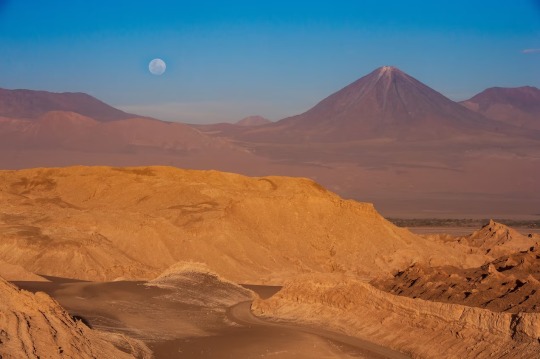
A Landscape of the Desert! The Atacama desert plateau is one of the driest places in the World. Mummies have been found here that predate ancient Egypt’s by 2,000 years. Photograph By Naftali Hilger, Laif/Redux
Decay is a biological process and without water, biology can’t work. This is why deserts preserve bodies so well and why Egyptian and Chinchorro mummification practices involved steps to dry out the body.
The oldest Chinchorro mummy, Acha Man, was naturally preserved by the desert for more than 9,000 years. Natural mummies have been found in deserts around the world. Among the most well-preserved are the Tarim mummies of Xinjiang, China, who were buried in boat-shaped coffins up to 4,000 years ago in the Taklamakan Desert.
Salt
For a handful unfortunate Iranian miners caught in cave-ins at the Chehrabad salt mine, salt did the job just as well as deserts.
"They were working in the salt mine and then it collapsed,” says Rühli, who studied the mummies. This actually happened multiple times—at least twice, says Rühli—over about 1000 years, entombing young men separated from one another by centuries in the salt they’d come to mine. Though the weight of the salt crushed the miners, flattening their corpses, the salty rock drew the water out of their bodies and mummified their squashed remains.
Salts in the dry soils of the Atacama Desert also helped preserve the Chinchorro mummies, says Arriaza. The soils are rich in nitrate compounds, nitrogen, potassium, sodium, calcium. “Mostly salts,” he says. “That's going to help dehydrate the body.”
Ice
Removing the water from a corpse isn’t the only way to stop decay. Low temperatures slow down most biological processes, and freezing a body completely can keep it from rotting for thousands of years.
Pathologist Andreas Nerlich of the Munich Klinik Bogenhausen studied Ötzi, a 5,300-year-old ice mummy who was found poking out of melting glacier ice in the Ötztal alps near the Austrian-Italian border. “They're preserved as long as the ice is there,” he says of mummies like Ötzi.
While “very rare,” adds Nerlich, ice mummies like Ötzi can be remarkably well-preserved compared to dehydrated mummies. That’s because dehydration shrivels and distorts tissues, but frozen organs mostly keep their shape.
Permafrost, earth that remains frozen year-round, can also mummify. One Siberian mummy, the 2,500 year-old Ice Maiden, was quite literally frozen in a block of ice after her burial chamber flooded and the water quickly froze. Because her burial chamber was constructed from permafrost earth, the ice that formed inside never melted.
Freeze-Drying
Combining cold and dry conditions can mummify bodies even when it’s not consistently chilly enough to keep a body frozen year-round. That’s what happened to a handful of Thule Inuit women and children in Greenland. They were naturally mummified in their graves after their deaths, likely caused by famine or disease, in the 15th and 16th centuries.
It’s a bit like natural freeze-drying, says paleopathologist Niels Lynnerup of the University of Copenhagen, who studied the mummies.
“Even though it's very cold in Greenland, it's not like it's in the high Arctic with permafrost,” he says. The bodies were buried under rocky covers or cairns, so “they still had wind blowing through.” The wind desiccated the bodies and, combined with the bacteria-slowing effect of cold temperatures, mummified them.
Many of the Inca mummies discovered high on Andean mountaintops were preserved by freeze-drying, too. The exceptionally well-preserved Maiden of Llullaillaco, the mummy of a teenage Inca girl left to succumb to cold on an Andean mountaintop as a sacrifice, is a unique case as she was frozen solid.
Even the conditions in cool, dry crypts can sometimes preserve remains in a similar way so long as bodies are either well-ventilated or kept under airtight conditions after being dried out, says Nerlich. Several natural mummies in crypts weren’t entirely accidents. One Upper Austrian mummy known as the Luftg’selchter Pfarrer was intentionally stuffed with water-absorbing materials and treated with salts to delay decay temporarily before he naturally mummified in his crypt.
Bogs
Natural mummification almost always involves somehow getting rid of water, either by removing it entirely or turning it into ice. So may be a bit surprising that wet, swampy bogs can preserve human remains for millennia.
The oldest bog mummy is Cashel Man, who was probably killed in a sacrifice around 2,000 B.C. His body was naturally mummified because of the unusual chemical conditions in bogs.
“There are several factors which cause human remains to be mummified in bogs,” says archaeologist Isabella Mulhall of the National Museum of Ireland. “The lack of oxygen, the cool dark environment… the [acidity] levels of the bog also has a role to play.”
A type of moss often found in bogs also helps mummify bodies, Mulhall adds. Sphagnum moss releases an acidic sugary molecule called sphagnan, which takes up the nutrients that would otherwise nourish microbes that cause decay. This helps mummify corpses—though sphagnan also leaches the calcium out of bones, weakening them.
The acidic fluids in bogs chemically alter the body, not unlike leather tanning or pickling. That’s why most bog bodies, no matter how they looked in life, have dark, leathery skin and bright red hair.
Many bog bodies appear to have met rather violent ends—a fate shared with many other natural mummies. But because luck happened to preserve their bodies, the victims of these ancient tragedies can still tell scientists about themselves and their societies. The same processes that mummify human skin and organs can also sometimes preserve undigested food in the stomach, blood, traces of disease-causing microbes, and even clues about the ecosystems and climates that ancient people lived in.
“In a sense,” says Arriaza, “all these ancient remains are time capsules.”
#Science#Copper-Age Mummy Ötzi#Natural Mummification#Robert Clark#National Geographic Image Collection#Freeze-Dried#Salted#Elise Cutts#University of Zurich’s Institute of Evolutionary Medicine#Paleopathology#Frank Rühli#Egyptians#Chinchorro people of Northern Chile 🇨🇱#Atacama Desert 🐪 🌵#Physical Anthropologist Bernardo Arriaza#University of Tarapacá Chile 🇨🇱#Egyptian & Chinchorro Mummification Practices#Acha Man#Taklamakan Desert#Chehrabad Salt Mine#Nitrogen | Potassium | Sodium | Calcium | Salts#Pathologist Andreas Nerlich | Munich Klinik Bogenhausen#Permafrost#Niels Lynnerup | University of Copenhagen#Thule Inuit Women & Children | Greenland 🇬🇱#Isabella Mulhall | The National Museum of Ireland 🇮🇪#Cashel Man
1 note
·
View note
Photo
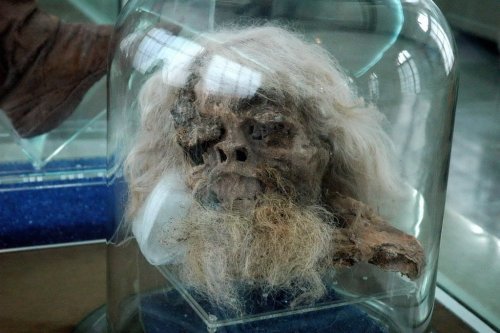
The Salt Men of Iran - By 2010, the remains of six men were discovered in the Chehrabad salt mines, located in Hamzehlu Village. Most of the men had been accidentally killed while working in the mines. The first man was discovered in 1993 and was accompanied by some artefacts which included three iron knives, a silver needle, some pottery and some other things. Over the forthcoming years, five more bodies were found, all in outstanding preservation. The oldest is estimated to date back to 9550 B.C.
127 notes
·
View notes
Text

In the winter of 1993, while bulldozing salt from the Chehrabad Salt Mine (Iran), miners came across a body with long hair, a beard and some artifacts.
These included the remains of a body, a lower leg inside a leather boot, three iron knives, a woollen half trouser, a silver needle, a sling, parts of a leather rope, a grindstone, a walnut, some pottery shards, some patterned textile fragments, and a few broken bones.
The body had been buried in the middle of a tunnel approximately 45 metres in length.
In 2004 another mummy was discovered only 50 feet away, followed by another in 2005 and a “teenage” boy mummy later that year. The oldest of the salt men found is truly ancient and has been carbon dated to 9550 B.C.
These “salt men” are in fact ancient corpses killed or crushed in the cave and mummified by the extreme conditions. Hair, flesh and bone are all preserved by the dry salinity of the cave, and even internal organs such as stomachs and colons have been found intact.
Source: Facebook
Archaeology and Ancient World
0 notes
Text
DNA collected from the 1,600-year-old remains of a sheep recovered from Chehrabad, a salt mine in Iran, has been sequenced by an international team of geneticists and archaeologists.
archaeology.org/news/9854-210715-iran-sheep-herds
(Image courtesy of Deutsches Bergbau-Museum Bochum and Zanjan Cultural Heritage Centre, Archaeological Museum of Zanjan)

0 notes
Text
Soľní muži z bane Chehrabad
Soľná baňa Chehrabad dokonalo mumifikovala po viac ako 1400 rokov telá baníkov. Dokonca sa zachovali takmer neporušené aj vnútorné orgány!
V roku 1994 objavili baníci v soľnej bani Chehrabad časť tela pochovaného v jednom z tunelov. Ostatky muža boli prirodzene mumifikované soľou. Mal dlhé biele vlasy i fúzy, a keď niekedy v 4. storočí zomrel, bolo mu asi 35 rokov. Na jednej nohe mal koženú topánku a okolo tela ležali tri železné nože, lano, keramické úlomky a vlašský orech.
(more…)
View On WordPress
0 notes
Text
Древние иранские соляные мумии (3 фото)
На северо-западе Ирана, неподалеку от деревень Хамзехли, Мехрабад и Чехрабад (Hamzehli, Mehrabad, Chehrabad), провинция Зенджан (Zanjan), в скалистом холме находятся крупные соляные копи. Месторождение состоит из таких пород,... Сообщение Древние иранские соляные мумии (3 фото) появились сначала на .
http://factonim.ru/drevnie-iranskie-solianye-mymii-3-foto/
0 notes
Photo
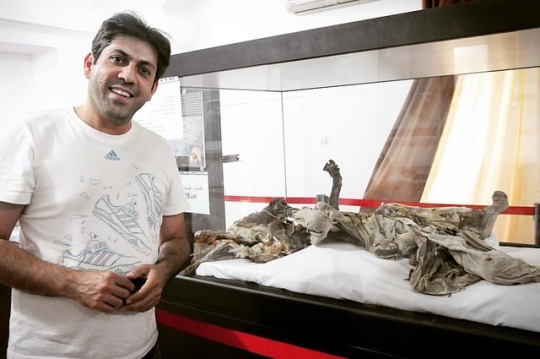
Salt men were dug out a few years ago in the salt mine of Chehrabad in Iran. They were the mummified remains of 6 miners, killed in accidents. The mine was operational during the Achaemenid Dynasty ( 6th to 4th century BC ) and Sassanid Dynasty ( 4th to 6th century AD ). However, the deaths of these salt men happened in different times. The oldest one has been carbon dated to 9950 BC and the most recent one has been dated to 300 AD. These are remarkable natural mummification incidents and I strongly suggest everyone one to visit this museum in Zanjan, Iran 😍🌹❤️ ❤️ 🗺 🇺🇸 🥇 ✈️ 🏴 #photographer #photography #advertisement #usa #uk #canada #australia #traveling #yolo #ariokhosroshahi #фотография #写真 #fotografia #kiev #日本 #ariotravel #ukraine #america #model #makeupartist #maccosmetics #makeup #modeling #traveler #travel #mummy #fashion #actress #modelling #losangeles (at Chehrabad, Zanjan, Iran)
#travel#photography#makeupartist#australia#model#fotografia#ukraine#kiev#traveling#ariotravel#日本#advertisement#america#фотография#canada#uk#ariokhosroshahi#写真#yolo#photographer#modelling#mummy#traveler#actress#usa#makeup#losangeles#modeling#maccosmetics#fashion
0 notes
Text
The saltmen are a group of natural mummies that were discovered in the Chehrabad Salt Mine in Iran. This mine is in the Zanjan Province and located about 340 km (211.27 miles) northwest of Tehran. The men are believed to have died in the salt mine and been naturally preserved by the salt. A total of six saltmen have been discovered over the years and they belong to different eras, including the Achaemenid and Sasanian periods.
#salt#Man#mine#Iran#Chehrabad#mummy#Sasanian#Achaemenid#Mining#preservation#ancient#history#ancient origins
44 notes
·
View notes
Text
The saltmen are a group of natural mummies that were discovered in the Chehrabad Salt Mine in Iran. This mine is in the Zanjan Province and located about 340 km (211.27 miles) northwest of Tehran.
27 notes
·
View notes
Text
The saltmen are a group of natural mummies that were discovered in the Chehrabad Salt Mine in Iran. This mine is in the Zanjan Province and located about 340 km (211.27 miles) northwest of Tehran. The men are believed to have died in the salt mine and been naturally preserved by the salt. A total of six saltmen have been discovered over the years and they belong to different eras, including the Achaemenid and Sasanian periods.
20 notes
·
View notes
Text
The saltmen are a group of natural mummies that were discovered in the Chehrabad Salt Mine in Iran. This mine is in the Zanjan Province and located about 340 km (211.27 miles) northwest of Tehran. The men are believed to have died in the salt mine and been naturally preserved by the salt. A total of six saltmen have been discovered over the years and they belong to different eras, including the Achaemenid and Sasanian periods.
28 notes
·
View notes
Text
The saltmen are a group of natural mummies that were discovered in the Chehrabad Salt Mine in Iran. This mine is in the Zanjan Province and located about 340 km (211.27 miles) northwest of Tehran. The men are believed to have died in the salt mine and been naturally preserved by the salt. A total of six saltmen have been discovered over the years and they belong to different eras, including the Achaemenid and Sasanian periods.
27 notes
·
View notes
Link
25 notes
·
View notes
Photo
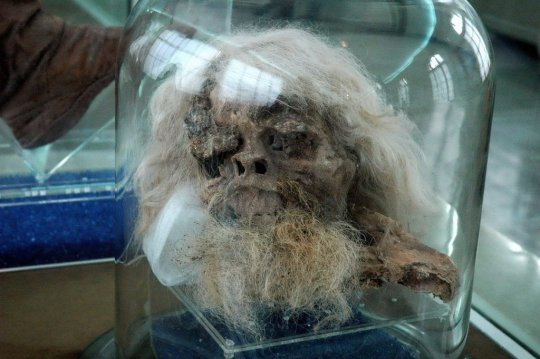
The Salt Men of Iran - By 2010, the remains of six men were discovered in the Chehrabad salt mines, located in Hamzehlu Village. Most of the men had been accidentally killed while working in the mines. The first man was discovered in 1993 and was accompanied by some artifacts which included three iron knives, a silver needle, some pottery and some other things. Over the forthcoming years, five more bodies were found, all in outstanding preservation. The oldest is estimated to date back to 9550 B.C.
273 notes
·
View notes
Text
Preserved by Nature: Studying the Spectacular Salt Mummies of Iran
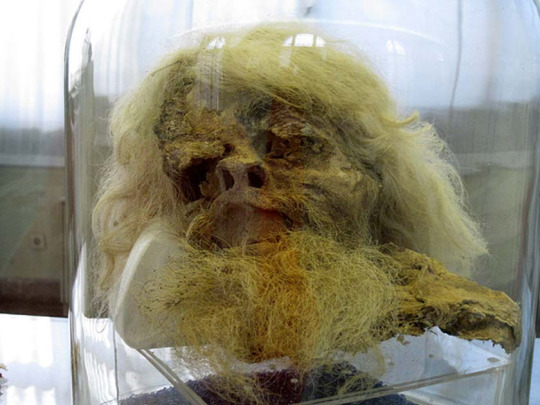
The saltmen are a group of natural mummies that were discovered in the Chehrabad Salt Mine in Iran. This mine is in the Zanjan Province and located about 340 km (211.27 miles) northwest of Tehran. The men are believed to have died in the salt mine and been naturally preserved by the salt. A total of six saltmen have been discovered over the years and they belong to different eras, including the Achaemenid and Sasanian periods.
Read more...
38 notes
·
View notes